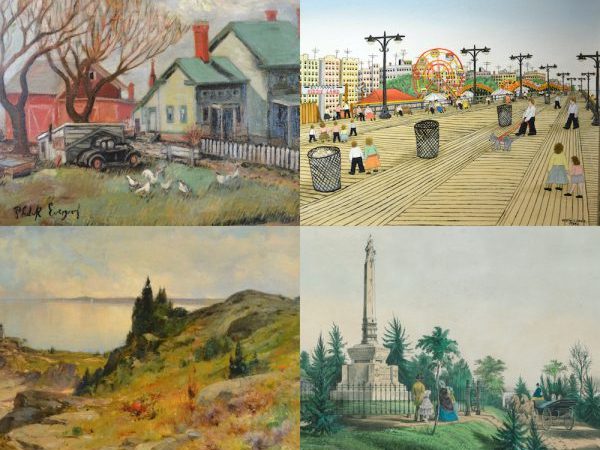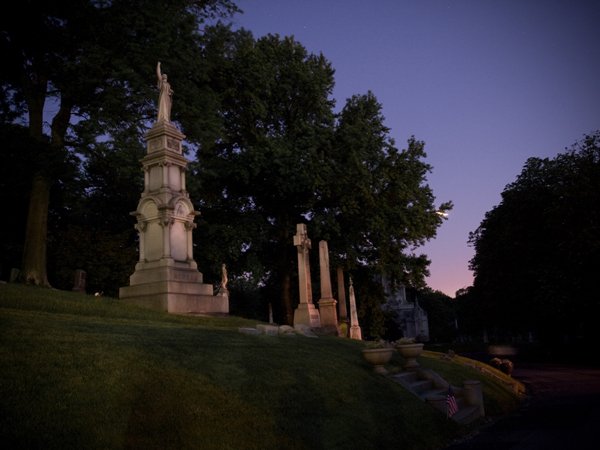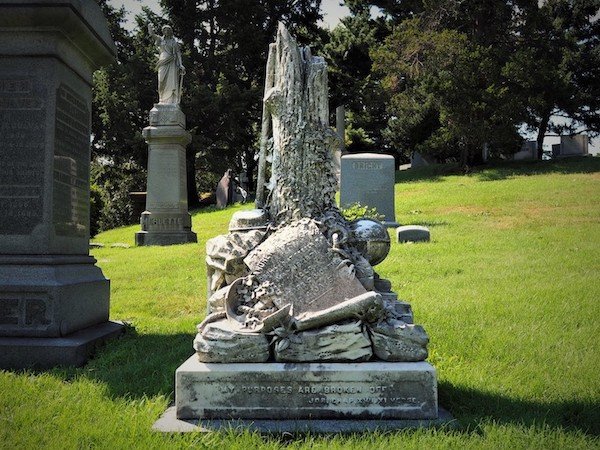Death Café
Green-Wood Cemetery 500 25th Street, Brooklyn, NY, United StatesThe Death Café is inspired by the centuries-old European salon (or café), an informal gathering to discuss philosophical, political or scientific ideas. In 2011, British entrepreneur Jon Underwood brought this concept to discussions of the most universal topic of all: death. Underwood’s intention was to provide an opportunity to “increase awareness of death with a view to helping people make the most of their lives.” Today, there are over 4,400 Death Cafes in 26 countries around the world.
Green-Wood’s Painters, Part 2
If a picture is worth a thousand words, then pull up a chair, because we have many great stories to share with you! Among Green-Wood’s permanent residents are over 400 of some of the most acclaimed painters of the nineteenth and twentieth centuries: Asher Durand, George Bellows, and Jean-Michel Basquiat, to name a few! Join ... Read more
Green-Wood After Hours
Long after Green-Wood’s gates close to the public, explore its historic grounds under the cover of night. You’ll weave through the Cemetery’s stunning landscape and visit the graves of fascinating figures in New York and American history. This not-to-be-missed walking tour ends with a visit to the Catacombs, which are normally closed to the public.
Green-Wood After Hours
Long after Green-Wood’s gates close to the public, explore its historic grounds under the cover of night. You’ll weave through the Cemetery’s stunning landscape and visit the graves of fascinating figures in New York and American history. This not-to-be-missed walking tour ends with a visit to the Catacombs, which are normally closed to the public.
Green-Wood After Hours
Long after Green-Wood’s gates close to the public, explore its historic grounds under the cover of night. You’ll weave through the Cemetery’s stunning landscape and visit the graves of fascinating figures in New York and American history. This not-to-be-missed walking tour ends with a visit to the Catacombs, which are normally closed to the public.
Green-Wood After Hours
Long after Green-Wood’s gates close to the public, explore its historic grounds under the cover of night. You’ll weave through the Cemetery’s stunning landscape and visit the graves of fascinating figures in New York and American history. This not-to-be-missed walking tour ends with a visit to the Catacombs, which are normally closed to the public.
Green-Wood After Hours
Long after Green-Wood’s gates close to the public, explore its historic grounds under the cover of night. You’ll weave through the Cemetery’s stunning landscape and visit the graves of fascinating figures in New York and American history. This not-to-be-missed walking tour ends with a visit to the Catacombs, which are normally closed to the public.
Green-Wood After Hours
Long after Green-Wood’s gates close to the public, explore its historic grounds under the cover of night. You’ll weave through the Cemetery’s stunning landscape and visit the graves of fascinating figures in New York and American history. This not-to-be-missed walking tour ends with a visit to the Catacombs, which are normally closed to the public.
History Happy Hour: Hidden Green-Wood
Green-Wood isn’t wanting for extraordinary and monumental tombs, but many of its most remarkable residents lay buried under unmarked, modest, or sunken stones. It’s no wonder that visitors spend so much time looking for graves that are often easy to miss! You’ll learn about some of Green-Wood’s lesser-known—but equally fascinating—monuments across our 478 acres. Highlights ... Read more
Jeremiah Hamilton: America’s First Black Millionaire
Jeremiah Hamilton was a wheeler-dealer in an otherwise lily white business community. In the nineteenth century, he went toe-to-toe with the most powerful men in America, including Cornelius Vanderbilt, as he put together an unprecedented fortune—amassing nearly $2 Million by the time of his death (over $250 million today)!Live from Australia, Shane White, the world’s ... Read more
Green-Wood’s public programs are made possible by the New York State Council on the Arts with the support of the Office of the Governor and the New York State Legislature, as well as the New York City Department of Cultural Affairs.




